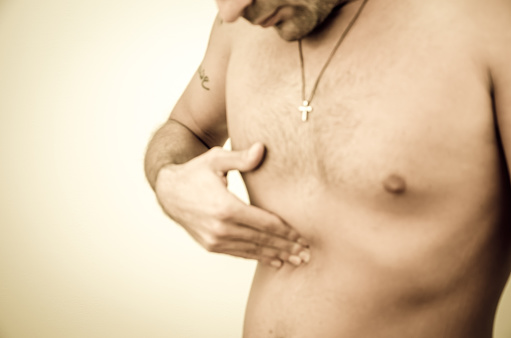
The gallbladder is a small organ nestling below the liver on the right side. It’s main function is to store a digestive juice known as bile which is produced and delivered by the liver. Bile is secreted into the duodenum of the small intestine during digestion through thin tubes known as bile ducts, where it promotes efficient digestion. If there is an imbalance in the functioning of the gallbladder, the bile tends to crystallise into brittle pieces known as gallstones. The formation of gallstones, called cholelithiasis, is still a mystery, but certain factors contribute to the risk, such as being obese, female, and over 40. Sadly, there is no certain method of preventing them, but dietary changes like consuming less fat seem to reduce the occurrence of gallstones. These stones can obstruct the bile ducts, making the gallbladder expand in size. This could result in diseases such as acute cholecystitis and acute pancreatitis, which produce symptoms like stomach ache, fatigue, bloating, vomiting or jaundice. As gallstones are very painful and refuse to dissipate by themselves, surgical removal of gall bladder is the preferred treatment. This surgery is known as cholecystectomy.
Finding gallstones is the easy part. Most doctors use ultrasonography to scan for gallbladder disease, but rarely CT or nuclear medicine scans are used. If surgery is recommended, several medical tests will be performed to test if the patient is fit enough. In addition, any medication or supplements being taken by the patient must be reported to the doctor as they can cause problems with the procedure. There are, as always with invasive procedures, risks linked with cholecystectomy. While they are mostly safe, patients may encounter infections, bile leakage, blood clotting, injuries to bile ducts, and so on. Discuss all options with the doctor to weigh the risks with the benefits of surgery. There are several surgery packages online that offer cheap and affordable prices.
- Laparoscopic cholecystectomy
This procedure is chosen by the surgeon for patients who have minor cases of gallbladder disease. It is called the keyhole surgery, as only four small incisions are made, through which a narrow tube containing a camera is sent in. Through the live footage, the surgeon can see the gallbladder and remove it using fine surgical tools. Laparoscopic cholecystectomy takes around 1-2 hours for completion. Patients can return home the same day, and suffer only minimal pain post the operation. Around a week’s time is necessary for a total recovery.
- Open cholecystectomy
This operation is recommended for patients who are obese, pregnant or a severe case of gallbladder disease. During this surgery, a 15 cm cut is created to open up the abdomen, through which the surgeon can extract the diseased gallbladder. Open cholecystectomy takes 1-2 hours, but there is a higher risk for postoperative pain, hernia and wound infections. As it is a more invasive surgery the patient might take upto 6 weeks to recover fully.
Gall bladder removal surgery is one of the most common surgeries performed by doctors and is extremely safe.Very rarely, medication can be given to degrade gallstones, but surgery is traditional in nearly 90% of cases. Cholecystectomy does not affect the digestive process, as the bile produced by the liver directly leaks into the intestine. Occasionally, bloating or diarrhoea occur in the weeks succeeding the surgery, but these symptoms disappear over time.
